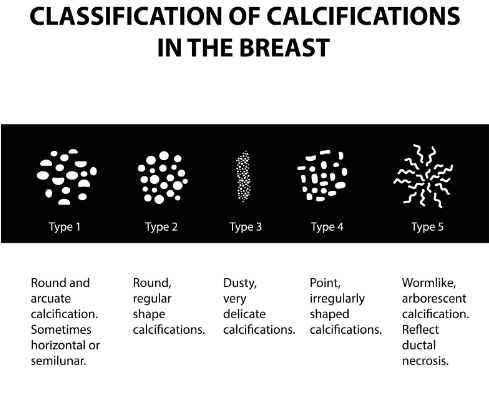Dr. Page’s Two-Year Journey with Microcalcifications
Dr. Page’s Two-Year Journey with Microcalcifications
In October 2022, Dr. Page, like so many of our patients at WIFM, went for her routine mammogram expecting the usual—another normal result. But life had other plans. The mammogram revealed something unexpected: a cluster of microcalcifications. In her case, these tiny calcium deposits carried a heavy suspicion of Ductal Carcinoma In Situ (DCIS), a non-invasive breast cancer. This diagnosis wasn’t definitive yet, but it marked the beginning of a two-year journey filled with tests, uncertainty, and hope.
The Journey Begins
After receiving the news, Dr. Page did what many of us would do- she sought a second opinion. At Froedtert Hospital, known for its second opinions, her journey through multiple tests began:
- Repeat Mammogram
- Ultrasound
- Contrast MRI of the Breast
- Needle Biopsy- Unfortunately the biopsy was unsuccessful due to the microcalcifications high on her chest wall and close to the muscle overlying the chest cavity. This meant she had to undergo a surgical biopsy.
- Surgical Biopsy- In February 2023, Dr. Page was taken to the operating room for a surgical biopsy. “This is not how anyone wants to start the year,” she shared with us, but she faced the challenge head on.
The results? Inconclusive, yet concerning enough to place her in the high-risk category, requiring repeat mammograms every three months.
Today: The Final Mammogram
Fast forward to today, after countless screenings and months of waiting, Dr. Page had her last high-risk mammogram. And the news couldn’t have been better- no changes, no cancer! After two long years, she has been told that she can return to annual screenings. A moment of deep relief and gratitude. “YES!!!!!! THANK YOU” she exclaimed. It’s a victory we all celebrate with her.
Understanding Breast Microcalcifications
Microcalcifications are tiny calcium deposits that appear as small white specks on mammograms. While they’re common, especially in menopausal and postmenopausal women, they can sometimes indicate early breast cancer or precancerous changes, ad they did for Dr. Page.
Characteristics of Concerning Microcalcifications
Microcalcifications don’t always signal cancer, but certain characteristics can raise red flags:
- Clustering: When microcalcifications appear in tight groups or clusters, as in Dr. Page’s case.
- Irregular Shapes: Suspicious microcalcifications often have irregular shapes, known as pleomorphic.
- Fine Appearance: Very small, fine microcalcifications can be more concerning than larger, coarser ones.
- New or Changing Patterns: If microcalcifications appear for the first time or show changes from previous mammograms, they warrant further investigation.
What Does This Mean for You?
Approximately 80% of microcalcifications are benign, but some patterns can indicate precancerous changes or early breast cancer. Women with three or more microcalcification clusters, like Dr. Page, are at higher risk for breast cancer. This risk is even more significant in premenopausal women. However, early detection through regular mammograms gives us the best chance at catching these changes before they become invasive.
The Link Between Microcalcifications and DCIS
Microcalcifications are often associated with ductal carcinoma, particularly Ductal Carcinoma In Situ (DCIS). This form of cancer is typically detected through mammographically significant microcalcifications. The presence of new or increasing clusters raises the likelihood that the carcinoma will be invasive, which is why screening and regular follow-ups are crucial.
For Dr. Page, her microcalcifications were a signal to monitor closely. Her dedication to staying on top of her health and undergoing frequent screenings ensured that any potential cancer was caught early.
Why Regular Mammograms Matter
Dr. Page’s story highlights the importance of regular mammograms, especially for women over 50. Even when mammograms reveal something as seemingly small as microcalcifications, further investigation can make all the difference in early detection and treatment.
At WIFM, we advocate for a proactive approach to breast health. If you’re over 50, have a history of abnormal mammograms, or are in a high-risk group, don’t hesitate to schedule regular screenings. Early detection saves lives.
Celebrate the Small Wins
As Dr. Page reminds us, every screening and test is a step toward protecting your health. She faced uncertainty, stress, and fear—but today, we celebrate her victory: no cancer. Her journey, though difficult, serves as a reminder that regular screenings and early intervention matter.
Let’s take this opportunity to encourage all women to stay informed and proactive about their health. If you’ve been putting off your mammogram, make an appointment today. You never know—it might be the small step that saves your life.
At WIFM, we’re here to walk with you through every stage of your health journey. Because your well-being is worth it.
Contact WIFM
If you have questions or concerns about your breast health or need to schedule a screening, contact us today. Our team is here to support you every step of the way!

